Madison Symphony Orchestra Program Notes
December 3-4-5, 2021
96th Season
Michael Allsen
Welcome to
the 2021 edition of “A Madison Symphony Christmas!” This
program has become a Madison holiday tradition, and is always
among our most popular offerings. The program moves from
classical styles in the first half—culminating in Handel’s
great “Hallelujah” chorus—to lighter holiday music in the
second half. And as always, we end with a Gospel finale…and a
chance for you to
sing along! We welcome two distinguished vocal soloists,
soprano Elizabeth Caballero and tenor Jared Esguerra. This program
also features three fine choruses: the Madison Youth Choirs, the
Mount Zion Gospel Choir, and our own Madison Symphony Chorus. We
are also proud to feature one of the MSO’s own, flutist Stephanie Jutt.
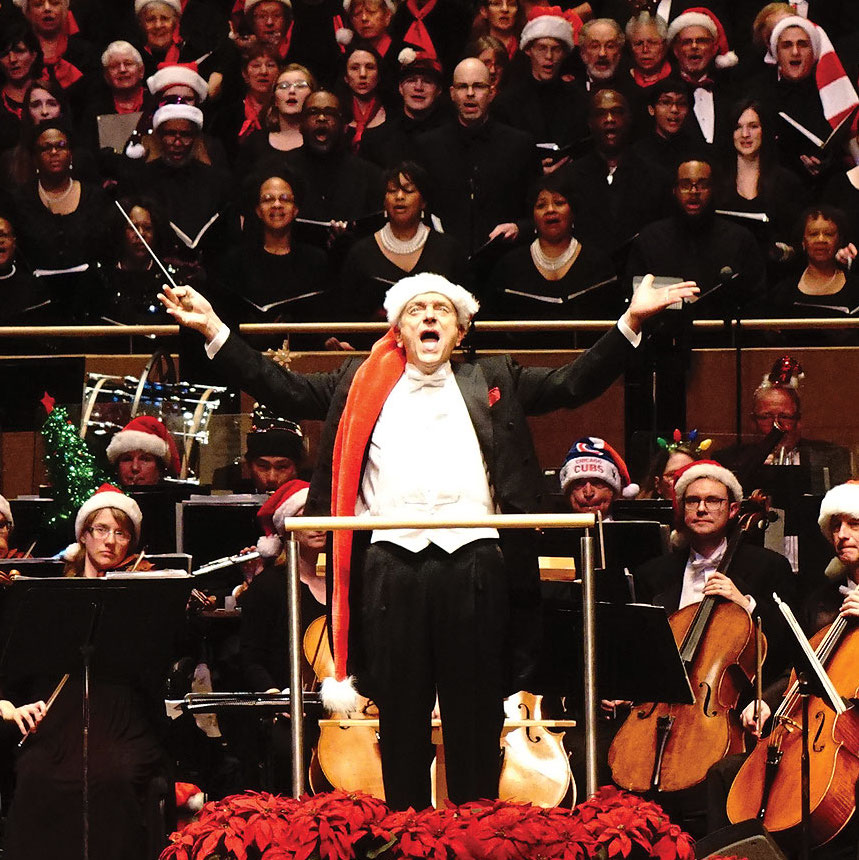 Among the most famous hymns of
Christmas, Joy to the World may also the most
famous case of misattribution among Christmas hymns. It has
traditionally been credited to Handel, and indeed one of its
first publishers, the hymn writer William Holford
printed it with Handel’s name in the early 1830s, probably
because of its close resemblance to a few bits from the
ever-familiar Messiah:
the choruses “Lift Up Your Heads” and “Glory to God,” and
the instrumental sections of the aria “Comfort Ye.” The great
Methodist hymn writer Lowell
Mason cemented the association with Handel when he
revised the tune in 1839 and used it to set a Christmas hymn
text by Handel’s contemporary Isaac Watts. This familiar hymn
is heard here in an appropriately joyous and grand arrangement
by Mack Wilberg, longtime director of the famed Mormon
Tabernacle Choir.
Among the most famous hymns of
Christmas, Joy to the World may also the most
famous case of misattribution among Christmas hymns. It has
traditionally been credited to Handel, and indeed one of its
first publishers, the hymn writer William Holford
printed it with Handel’s name in the early 1830s, probably
because of its close resemblance to a few bits from the
ever-familiar Messiah:
the choruses “Lift Up Your Heads” and “Glory to God,” and
the instrumental sections of the aria “Comfort Ye.” The great
Methodist hymn writer Lowell
Mason cemented the association with Handel when he
revised the tune in 1839 and used it to set a Christmas hymn
text by Handel’s contemporary Isaac Watts. This familiar hymn
is heard here in an appropriately joyous and grand arrangement
by Mack Wilberg, longtime director of the famed Mormon
Tabernacle Choir.
Johann Sebastian Bach’s Christmas
Oratorio was written in Leipzig for the Christmas season
of 1734-35. Not really an “oratorio,” in the dramatic sense of Judas Maccabeus and
other contemporary works by Handel, Bach’s Christmas Oratorio is
instead a series of six self-contained cantatas for Christmas
Day and the feasts that follow it. The exuberant Ehre sei dir, Gott,
gesungen (Let honor be sung to you,
O God) is the opening chorus of the fifth cantata,
serving as a prelude to the stories of the Three Wise Men and
King Herod. It
is actually one of just three choral movements Bach composed
originally for the Christmas
Oratorio—the other choruses were all reworkings of
earlier material. Set in a three-part form above an
unendingly energetic orchestral background, Ehre sei dir is a showcase for Bach’s
brilliant fugal writing. A brief middle section is slightly
more reserved, before a return of the opening music.
 Jonathan Dove (b.1956) is a
successful English composer, particularly in the world of opera:
following the success of his comic opera Flight in 1998, he has
composed nearly 30 operas. Dove has also written extensively for
chorus, chamber groups and orchestra. His flute concerto, The Magic Flute Dances,
was written for Welsh flutist Emily Beynon, who played its
premiere in February 2000 with the Milton Keynes City Orchestra.
It is freely based upon Mozart’s 1791 opera The Magic Flute. Dove
provides the following imaginative description:
Jonathan Dove (b.1956) is a
successful English composer, particularly in the world of opera:
following the success of his comic opera Flight in 1998, he has
composed nearly 30 operas. Dove has also written extensively for
chorus, chamber groups and orchestra. His flute concerto, The Magic Flute Dances,
was written for Welsh flutist Emily Beynon, who played its
premiere in February 2000 with the Milton Keynes City Orchestra.
It is freely based upon Mozart’s 1791 opera The Magic Flute. Dove
provides the following imaginative description:
“What happens to the
magic flute at the end of Mozart’s opera? Does Tamino give it
back to the three ladies? Does it lie in a box, forgotten, at
the back of a cupboard? Or does it, perhaps, when no one’s
looking, come out and dance, singing to itself about Tamino’s
adventures? When Emily Beynon asked me for a concerto that had
some connection with Mozart, I thought this could be an
opportunity to let the flute out of its box, not to play the
music it plays in the opera, but to play the music it has heard
other people sing. The concerto begins with music from the
moment before Tamino and Pamina walk through fire and water,
while the flute plays fragments of ideas it will explore later.
The opening chords of the Overture open a door into the
imaginary world of the flute, and usher in its first
reminiscence: the Queen of the Night, a character with whom it
seems particularly fascinated. In the next section the flute
dances around ideas from the Overture; a short cadenza (a
recollection of Tamino fleeing from the serpent) leads to the
moment Tamino sees Pamina’s portrait. The next memories are a
little confused—Papageno left alone, no one answering his pipes.
His isolation is echoed by that of Pamina, bewildered by
Tamino’s silence. The vibraphone announces the three helpful
boys; their music becomes a kind of passacaglia. This is
followed by a scherzo, made out of Pamina’s and Papageno’s duet;
and then, with the flute once again entranced by the Queen of
the Night, the opening chords of the Overture return, closing
the memory door.”
Though this is clearly a challenging virtuoso
piece and music written by a 21st-century composer, Dove handles
the quotations from the opera with a mix of seriousness, wit,
and good humor worthy of the Mozart original.
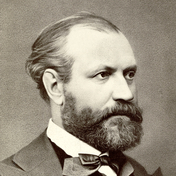 Romantic composer Charles Gounod set a
lovely cantabile
melody above one of Bach’s
keyboard preludes to create one of the best-loved sacred songs
of all time. Gounod initially improvised this melody over
Bach’s Prelude No.1
from The Well-Tempered
Clavier in 1853, and it was initially published as an
instrumental solo. In 1859 it appeared as a vocal solo with
its now-familiar Latin text. The Ave Maria,
drawn from the Annunciation story in the Gospel of Luke, is
one of the most familiar prayers of the Catholic Church. It is
heard here in an arrangement by Dan Goeller, a South
Dakota-based conductor, composer, and arranger.
Romantic composer Charles Gounod set a
lovely cantabile
melody above one of Bach’s
keyboard preludes to create one of the best-loved sacred songs
of all time. Gounod initially improvised this melody over
Bach’s Prelude No.1
from The Well-Tempered
Clavier in 1853, and it was initially published as an
instrumental solo. In 1859 it appeared as a vocal solo with
its now-familiar Latin text. The Ave Maria,
drawn from the Annunciation story in the Gospel of Luke, is
one of the most familiar prayers of the Catholic Church. It is
heard here in an arrangement by Dan Goeller, a South
Dakota-based conductor, composer, and arranger.
Though
hymn-writer George Ratcliffe Woodward penned the words
to Ding Dong
Merrily on High in 1924, he reached back much
earlier for the melody: it was originally a tune included in a
16th-century dance manual, Thionot Arbeau’s Orchesographie
(1588) intended to be played with a circle-dance called the
bransle. Mack Wilberg’s sprightly arrangement plays up the
“dancey” nature of this melody. It begins with girls’ voices
and a lively accompaniment of bells and woodwinds, and
gradually involves the entire choir and orchestra. Though
he was respected in his day as composer of operas and ballet
scores (including the well-known Giselle) Adolphe Adam is known
to American audiences mostly for his Christmas carol Cantique de Noël.
Written in 1847 as a setting of a two-verse Christmas poem by
Mary Cappeaux, this carol was later adapted by J. S. Wright as a
three-verse English carol, O Holy Night.
This performance features an arrangement for tenor voice and
orchestra by Dan Goeller.
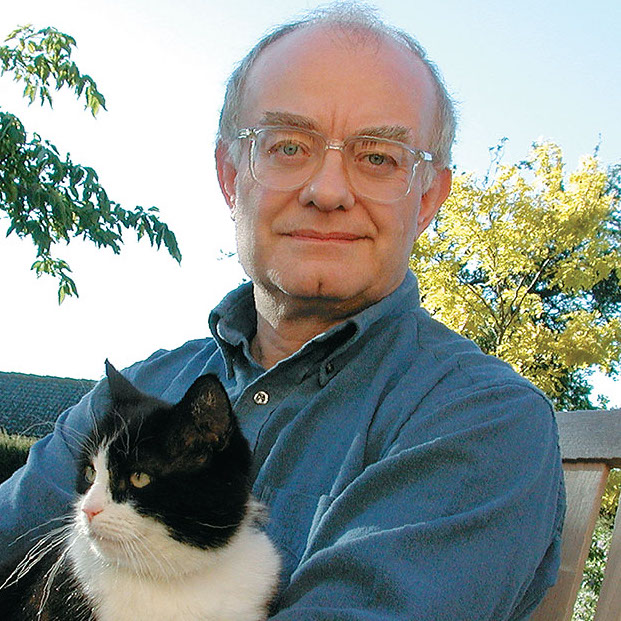 The distinctive musical style of
Englishman John Rutter,
together with his skill as choral conductor have made him a
familiar name in the world of choral music. (Nearly all of our
holiday programs over the last quarter century have featured at
least one of his pieces!) His Gloria,
composed in 1974, was one of his first works to gain wide
attention. It was commissioned by a chorus in Omaha, Nebraska,
but in relatively short order it became a favorite of choruses
throughout the United States and England. The Gloria
text is drawn from the Latin liturgy, and it has proved a
fertile source of inspiration to composers from the Middle Ages
onwards. Rutter provides the following description of his Gloria:
“The Latin text, drawn from the Ordinary of the Mass, is a
centuries-old challenge to the composer: exalted, devotional,
and jubilant by turns. My setting, which is based upon one of
the Gregorian chants associated with the text, divides into
three movements roughly corresponding with traditional symphonic
structure.” The original version was accompanied by a brass and
percussion ensemble, but at this program we feature Rutter’s
later arrangement for chorus and full orchestra.
The distinctive musical style of
Englishman John Rutter,
together with his skill as choral conductor have made him a
familiar name in the world of choral music. (Nearly all of our
holiday programs over the last quarter century have featured at
least one of his pieces!) His Gloria,
composed in 1974, was one of his first works to gain wide
attention. It was commissioned by a chorus in Omaha, Nebraska,
but in relatively short order it became a favorite of choruses
throughout the United States and England. The Gloria
text is drawn from the Latin liturgy, and it has proved a
fertile source of inspiration to composers from the Middle Ages
onwards. Rutter provides the following description of his Gloria:
“The Latin text, drawn from the Ordinary of the Mass, is a
centuries-old challenge to the composer: exalted, devotional,
and jubilant by turns. My setting, which is based upon one of
the Gregorian chants associated with the text, divides into
three movements roughly corresponding with traditional symphonic
structure.” The original version was accompanied by a brass and
percussion ensemble, but at this program we feature Rutter’s
later arrangement for chorus and full orchestra.
And as
always, the finale to our first half is the concluding “Hallelujah” chorus
from Part II of George
Frideric Handel’s
1741 oratorio Messiah. While
this familiar and exuberant chorus is actually the conclusion
of the Easter section of the oratorio, it has long since
become a standard part of the Christmas season as well.
Deck the Halls
is one of the oldest Christmas songs generally heard today—a
400-year-old Welsh carol that features the “fa-la-la” refrains
popular in 16th-century madrigals. It is heard here in an
arrangement for orchestra by Carmen Dragon. Dragon, a composer,
arranger, and conductor, was a fixture of the Hollywood music
scene for decades. He conducted music for thousands of hours of
radio broadcasts, and composed film scores, winning an Oscar in
1944 for Cover Girl.
He remains best-known today for hundreds of orchestral
arrangements—mostly created for performances at the Hollywood
Bowl—that are mainstays of orchestral “Pops” programs. Dragon
wrote his boisterous arrangement of Deck the Halls for a
1957 recording by the Hollywood Bowl Orchestra.
Composer Noel Regney and his
wife, lyricist Gloria
Shayne Baker wrote the Holiday standard Do You Hear What I
Hear? in
1962 and it became a huge hit for Bing Crosby in 1963, selling
over a million copies. Though usually heard as a sentimental
song to the Baby Jesus, Regney later said “I am amazed that
people can think they know the song, and not know it is a
prayer for peace.” It was written in October 1962, at the
height of the Cuban Missile Crisis, when nuclear war seemed
imminent. Contrary to their usual practice, Regney wrote the
lyric, and his wife wrote the melody. The result was a song
that they found so moving that they couldn't bear to sing it
at first. The final stanza, with its “Pray for peace, people
everywhere!” makes this as appropriate in 2021 as it was in
1962. Here, the popular choral arrangement by Harry Simeone is
combined with a new orchestration by Brant Adams.
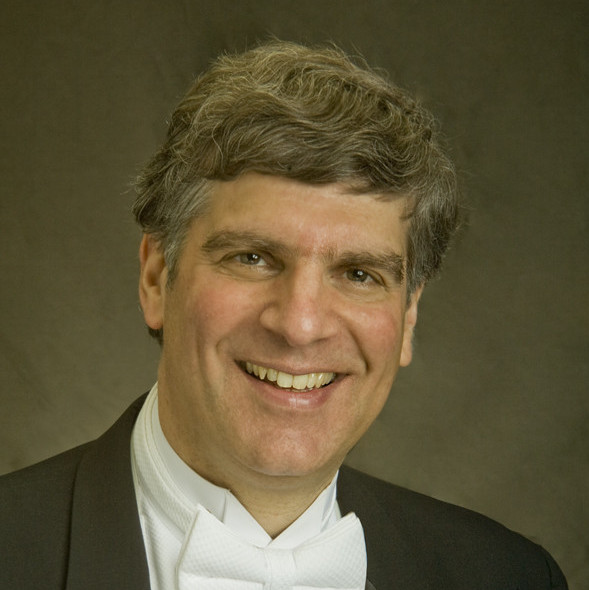 Peter Jaffe is a well-regarded
conductor and guest conductor who currently leads two orchestras
in California: the Stockton Symphony Orchestra and the Folsom
Lake Symphony Orchestra. He is also active as an arranger. Jaffe
wrote his Symph-Hanukkah
for the Stockton Symphony Orchestra in 2018. As its punning
title suggests, this is a lighthearted work. Jaffe uses the
familiar Dreidel Song
to link together several traditional Hanukkah songs: Ma’oz tzur (Rock of Ages), Mi y’malel (Who Can Retell?), Hanukkah chag yafeh (Hanukkah, Beautiful Holiday),
Blessing over the Hanukkah
Lights, and Sevivon
(Spinning Top). This witty medley works in a bit of klezmer style along the
way and ends, in what the composer describes as a “blaze of
glory,” with O Hanukkah,
and a joyful shout.
Peter Jaffe is a well-regarded
conductor and guest conductor who currently leads two orchestras
in California: the Stockton Symphony Orchestra and the Folsom
Lake Symphony Orchestra. He is also active as an arranger. Jaffe
wrote his Symph-Hanukkah
for the Stockton Symphony Orchestra in 2018. As its punning
title suggests, this is a lighthearted work. Jaffe uses the
familiar Dreidel Song
to link together several traditional Hanukkah songs: Ma’oz tzur (Rock of Ages), Mi y’malel (Who Can Retell?), Hanukkah chag yafeh (Hanukkah, Beautiful Holiday),
Blessing over the Hanukkah
Lights, and Sevivon
(Spinning Top). This witty medley works in a bit of klezmer style along the
way and ends, in what the composer describes as a “blaze of
glory,” with O Hanukkah,
and a joyful shout.
I Saw Three Ships Come
Sailing In is an old English carol, dating from the
17th century or earlier. The notion that ships could somehow
sail into the city of Bethlehem is geographical wishful
thinking, but the text is metaphorical and joyous, possibly
relating to the three wise men who visited the baby Jesus. In
this arrangement by James Stephenson, it is combined with the
Provençal carol Bring a Torch Jeannette
Isabella. This song, which may have existed by the
14th century, might actually have been a “carol” in the original
sense of the word. Medieval French carols were dance songs, and
in this case it may jave been connected to the ancient Provençal
tradition of erecting an elaborate crèche, or nativity
scene, to honor the Baby Jesus.
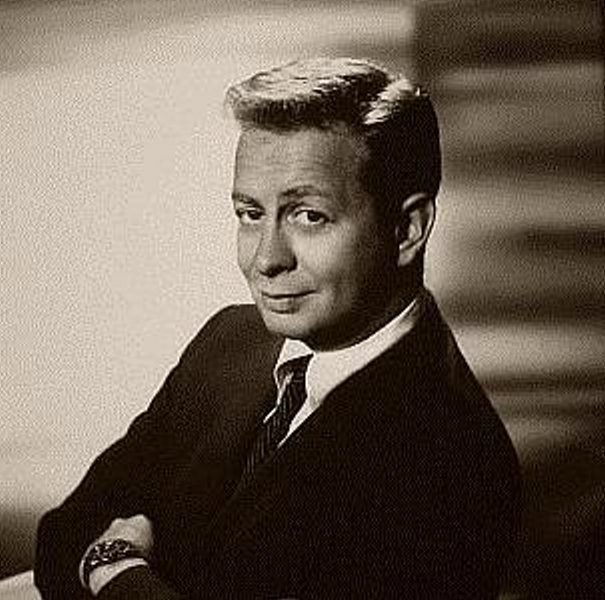 This section of the program ends
with a pair of slightly more contemporary holiday songs. The
ever-popular The Christmas Song (Chestnuts Roasting on an
Open Fire),
with all of those cozy wintertime images, was actually written
during the roasting heat of a California summer. In his
autobiography, Mel
Tormé related the story how in July 1945, he drove to the
home of his lyricist and collaborator Robert Wells in Toluca
Lake. He found the lyrics lying on the piano, and when Wells
finally appeared sweating and hot even in shorts and a t-shirt,
he told Tormé: “It was so damn hot
today, I thought I’d write something to cool myself off. All I
could think of was Christmas and cold weather.” Tormé
replied: “You know, this just might
make a song.” The
Christmas Song was written in about 45 minutes later
that day. Tormé quickly
showed the song to his friend Nat Cole, whose 1946 hit
recording is now a beloved holiday classic. It’s the Most Wonderful
Time of the Year was written by the
songwriting team of Eddie
Pola and George
Wyle. Pola and Wyle, who specialized in silly novelty
numbers like I Said My Pajamas (And Put On My Prayers),
are largely forgotten today, aside from this exuberant holiday
waltz—a big hit for Andy Williams in 1963.
This section of the program ends
with a pair of slightly more contemporary holiday songs. The
ever-popular The Christmas Song (Chestnuts Roasting on an
Open Fire),
with all of those cozy wintertime images, was actually written
during the roasting heat of a California summer. In his
autobiography, Mel
Tormé related the story how in July 1945, he drove to the
home of his lyricist and collaborator Robert Wells in Toluca
Lake. He found the lyrics lying on the piano, and when Wells
finally appeared sweating and hot even in shorts and a t-shirt,
he told Tormé: “It was so damn hot
today, I thought I’d write something to cool myself off. All I
could think of was Christmas and cold weather.” Tormé
replied: “You know, this just might
make a song.” The
Christmas Song was written in about 45 minutes later
that day. Tormé quickly
showed the song to his friend Nat Cole, whose 1946 hit
recording is now a beloved holiday classic. It’s the Most Wonderful
Time of the Year was written by the
songwriting team of Eddie
Pola and George
Wyle. Pola and Wyle, who specialized in silly novelty
numbers like I Said My Pajamas (And Put On My Prayers),
are largely forgotten today, aside from this exuberant holiday
waltz—a big hit for Andy Williams in 1963.
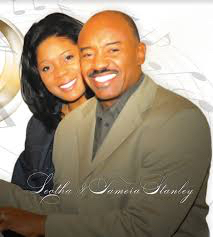 Part of our tradition since 2005 has been to
welcome the Mount Zion Gospel Choir to perform on this
program, singing works composed and arranged by its codirector
Leotha Stanley.
They open their set with a Stanley original, Christmas Hope.
They continue with a medley of Away in a Manger
and Yes, This is Jesus.
Away in a Manger is
relatively unusual among Christmas carols in existing with two
equally well-known melodies—it is familiar both as a hymn tune
published in 1887 by James Murray and as a lilting “cradle song”
written in 1895 by William Kirkpatrick; it is this second
version that Mr. Stanley has adapted here. The words first
appeared in a Sunday school magazine in 1884,
attributed—undoubtedly incorrectly—to Martin Luther.
Kirkpatrick, a prolific songwriter, wrote his version of Away in a Manger,
itself an adaptation of an earlier hymn tune, for a Christmas
musical in Philadelphia. Stanley describes his Yes, This is Jesus as
a “reply” to Away in a
Manger: an
assurance that this baby, born in the humblest of surroundings
was indeed the savior. The Mt. Zion Gospel Choir is joined by
our soloists and the other two choirs for the finale, Christmas Time is Here.
This another Stanley original, with lyrics of reassurance and
hope that respond to the “cloud that has been hanging over all
of us in the last 18 months.”
Part of our tradition since 2005 has been to
welcome the Mount Zion Gospel Choir to perform on this
program, singing works composed and arranged by its codirector
Leotha Stanley.
They open their set with a Stanley original, Christmas Hope.
They continue with a medley of Away in a Manger
and Yes, This is Jesus.
Away in a Manger is
relatively unusual among Christmas carols in existing with two
equally well-known melodies—it is familiar both as a hymn tune
published in 1887 by James Murray and as a lilting “cradle song”
written in 1895 by William Kirkpatrick; it is this second
version that Mr. Stanley has adapted here. The words first
appeared in a Sunday school magazine in 1884,
attributed—undoubtedly incorrectly—to Martin Luther.
Kirkpatrick, a prolific songwriter, wrote his version of Away in a Manger,
itself an adaptation of an earlier hymn tune, for a Christmas
musical in Philadelphia. Stanley describes his Yes, This is Jesus as
a “reply” to Away in a
Manger: an
assurance that this baby, born in the humblest of surroundings
was indeed the savior. The Mt. Zion Gospel Choir is joined by
our soloists and the other two choirs for the finale, Christmas Time is Here.
This another Stanley original, with lyrics of reassurance and
hope that respond to the “cloud that has been hanging over all
of us in the last 18 months.”
And then,
friends, it’s your
turn to sing!
________